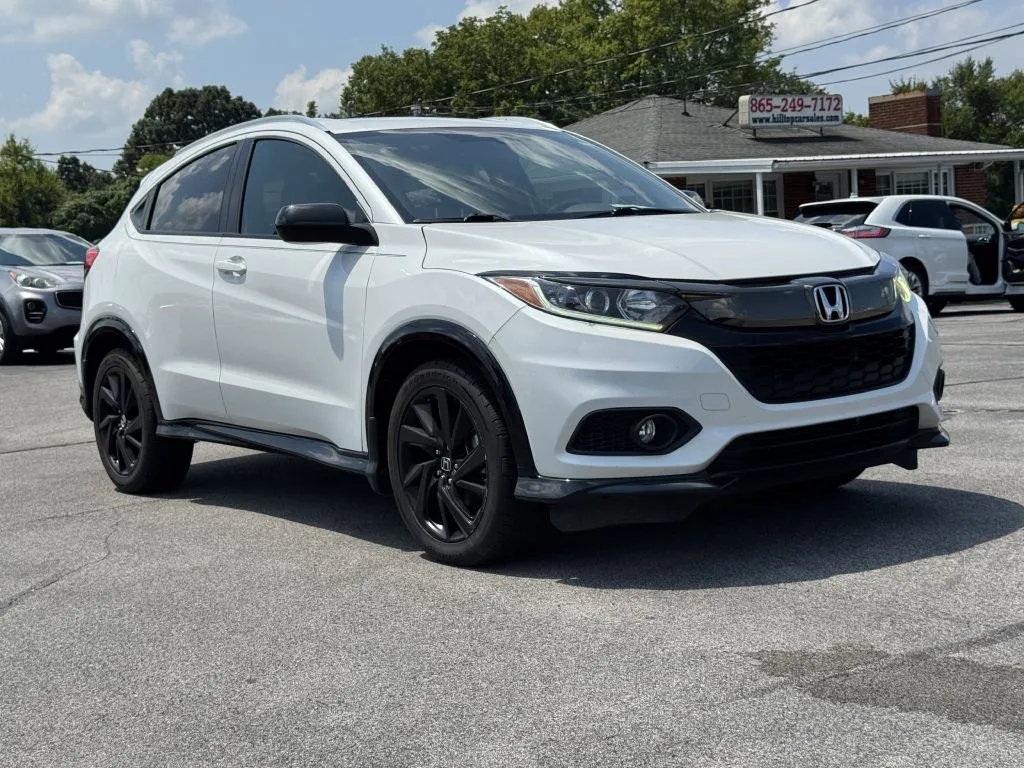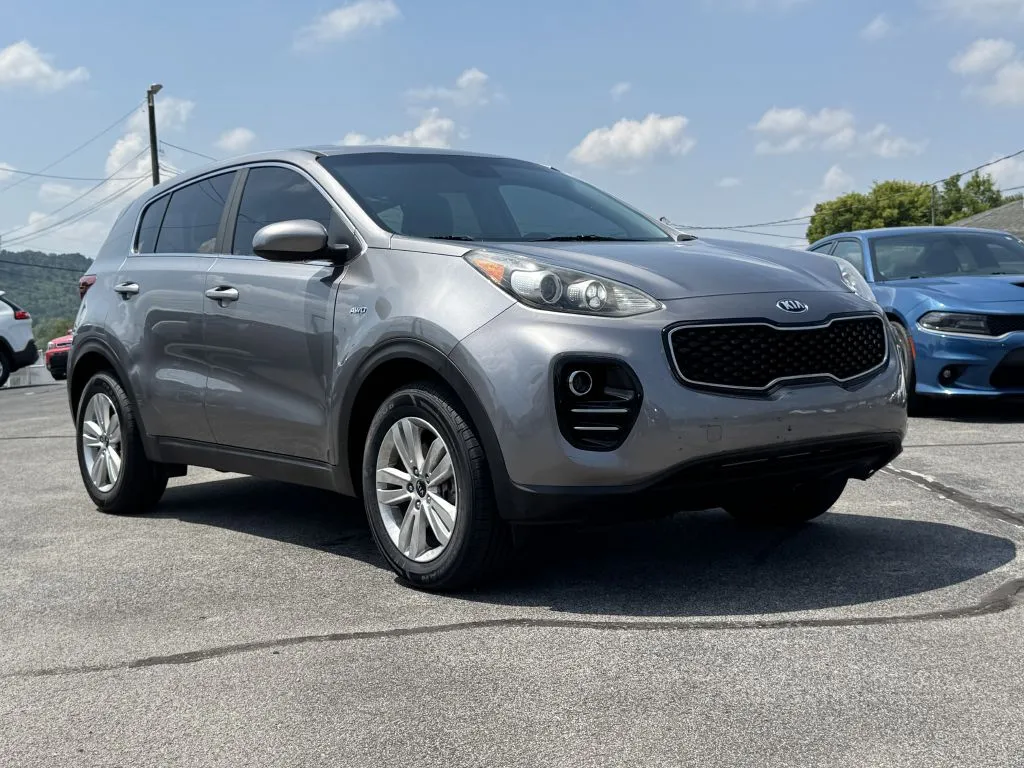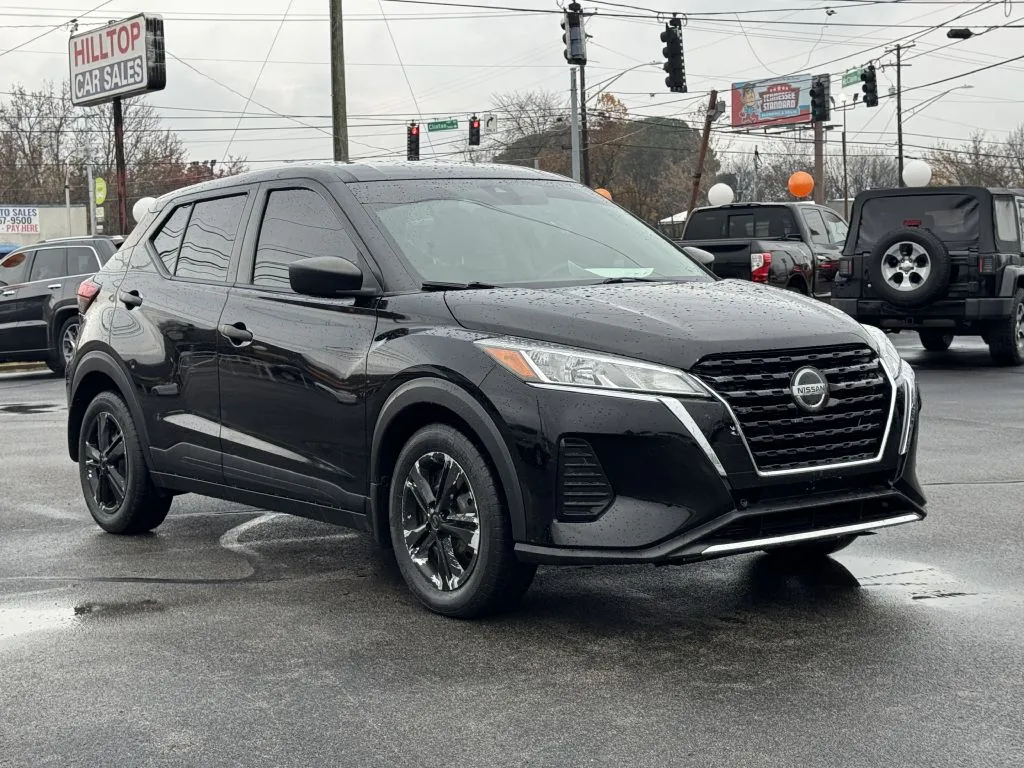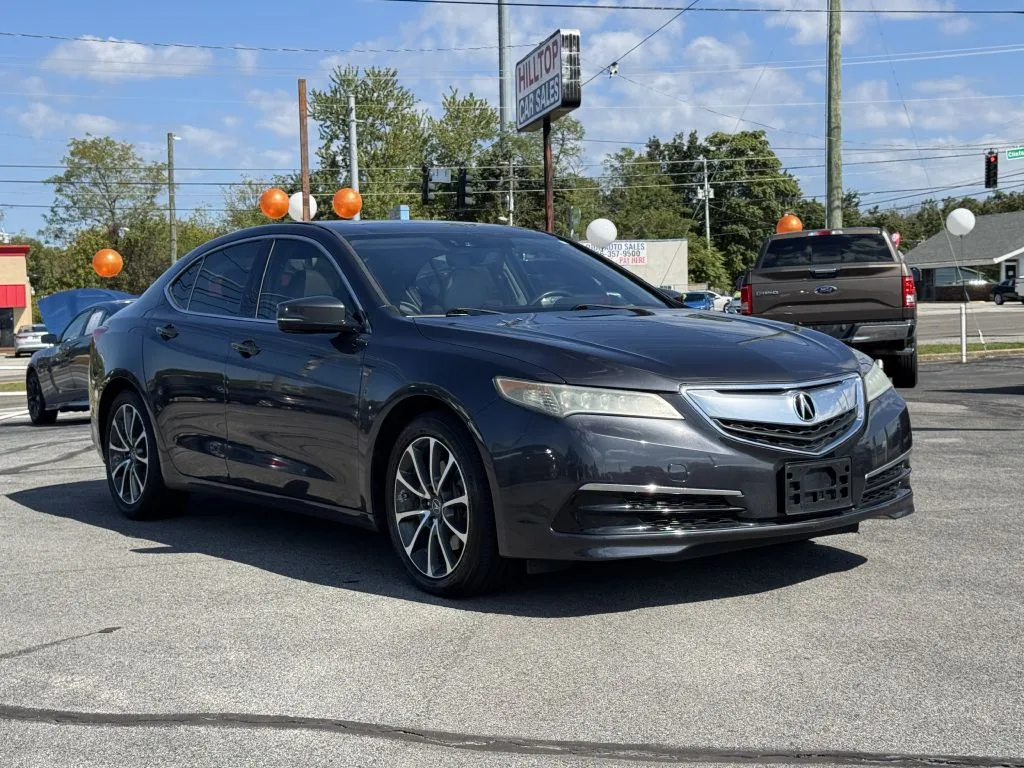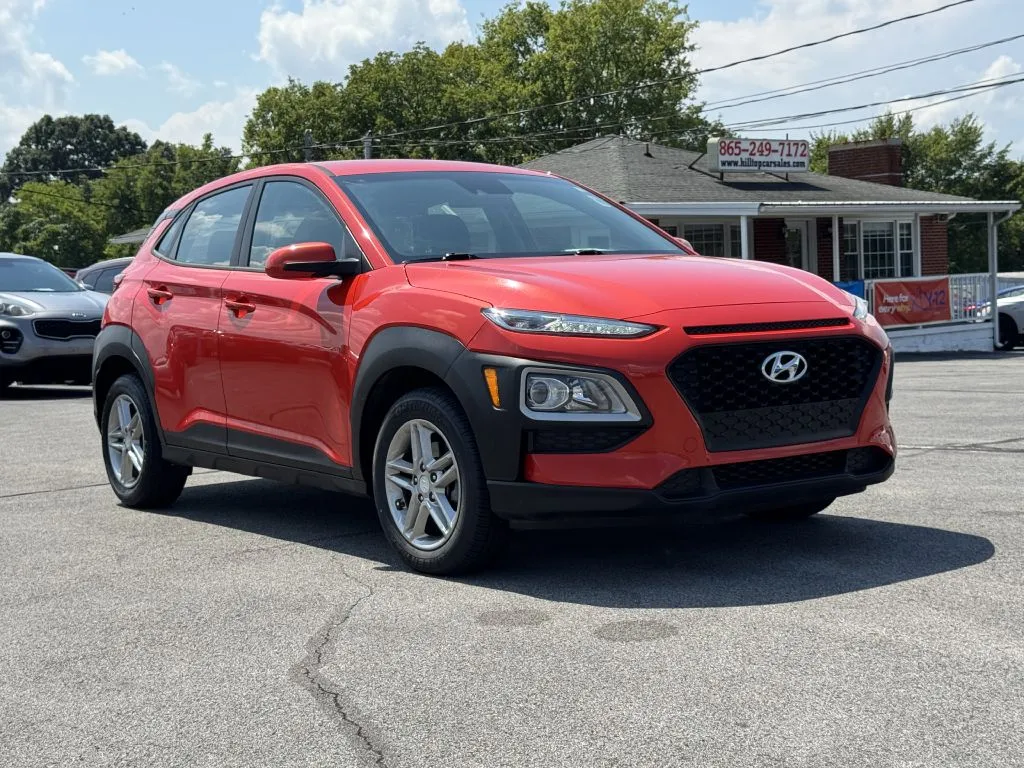2020 Used Ram vs Silverado: Which Full-Size Pickup is Best for You?
Table of Contents
Performance Comparison
When shopping for a used full-size pickup truck, the 2020 Ram 1500 and Chevrolet Silverado 1500 represent two of the most popular choices on the market. Both trucks received major redesigns in recent years, making them modern options with updated features and capabilities.
The 2020 Ram 1500 offers better fuel economy and a more powerful standard V8 engine, while the Silverado 1500 provides competitive pricing and proven reliability. The Ram delivers up to 25 mpg highway compared to the Silverado's 22 mpg, and its 5.7L HEMI V8 produces 395 horsepower versus the Silverado's 355 horsepower from its 5.3L V8.
Choosing between these trucks depends on what buyers value most. The Ram excels in comfort and efficiency, while the Silverado focuses on value and dependability. Both offer strong towing capacity and modern technology features that make them excellent choices for work and daily driving.
Key Takeaways
- The 2020 Ram 1500 delivers better fuel economy and more horsepower than the Silverado 1500
- Both trucks offer competitive towing capacity and modern interior technology features
- The final choice depends on whether buyers prioritize fuel efficiency or long-term value
Overview of the 2020 Ram 1500 and Silverado 1500
Both the 2020 Ram 1500 and Chevrolet Silverado 1500 received major updates in recent years, making them strong competitors in the full-size pickup market. These trucks offer different strengths in features, pricing, and overall value for buyers.
Key Features and Trim Levels
The 2020 Ram 1500 comes with several standard features that set it apart from the competition. It includes keyless entry, keyless start, and a backup camera as standard equipment. The truck also offers an upscale interior with spacious seating for up to six passengers in the Quad Cab configuration.
The Chevrolet Silverado 1500 takes a different approach with its feature offerings. Standard equipment includes Android Auto and Apple CarPlay integration, which the Ram 1500 lacks. The Silverado offers a regular cab pickup option that seats three passengers, focusing on work-oriented buyers.
Engine Options:
- Ram 1500: 3.6L V6 with 305 horsepower and 269 lb-ft of torque
- Silverado 1500: 4.3L V6 with 285 horsepower and 305 lb-ft of torque
The Ram 1500 also offers unique features like the RamBox Cargo Management System. This system provides secure storage compartments in the truck bed. Both trucks offer V8 engine upgrades and similar towing capabilities.
Pricing and Value for Money
The 2020 Ram 1500 starts at approximately $32,000 for base configurations. However, the entry-level trucks use the previous generation Ram 1500 Classic platform, which offers lower starting prices. Top-tier Limited trim models reach just below $70,000.
The Chevrolet Silverado 1500 offers competitive pricing that climbs to similar levels as the Ram 1500. The Silverado provides better fuel economy with its base engine, achieving 16 city/21 highway MPG compared to the Ram's 20 city/25 highway MPG.
Value Comparison:
- Ram 1500: More standard comfort and convenience features
- Silverado 1500: Better smartphone integration and work-focused options
Both trucks offer extensive customization options. The Silverado provides more basic work truck configurations, while the Ram 1500 focuses on comfort and premium features as standard equipment.
Performance Comparison
The 2020 Ram 1500 delivers more power with its 5.7L HEMI V8 engine producing 395 horsepower and 410 lb-ft of torque. The 2020 Chevy Silverado 1500 offers a 5.3L V8 engine that generates 355 horsepower and 383 lb-ft of torque.
Engine Options and Horsepower
The 2020 Ram 1500 comes standard with a 5.7L HEMI V8 engine. This pickup truck produces 395 horsepower and 410 lb-ft of torque.
The 2020 Chevy Silverado 1500 uses a 5.3L V8 engine as its base option. This engine generates 355 horsepower and 383 lb-ft of torque.
Ram pairs its engine with an 8-speed automatic transmission. Chevy uses a 6-speed automatic transmission in lower trims.
TruckEngineHorsepowerTorqueTransmission2020 Ram 15005.7L HEMI V8395 hp410 lb-ft8-speed auto2020 Chevy Silverado 15005.3L V8355 hp383 lb-ft6-speed auto
The Ram's extra transmission gears help with fuel efficiency and smoother acceleration.
Towing and Payload Capabilities
Both pickup trucks handle heavy loads well. The Ram 1500 can tow up to 12,750 pounds when properly equipped.
The Silverado 1500 offers similar towing capacity. Both trucks work well for hauling trailers and boats.
Payload capacity varies by trim level and options. Regular cab models typically carry more weight than crew cabs.
The Ram's higher torque output gives it an advantage when pulling heavy loads uphill. The 8-speed transmission also helps maintain power during towing.
Both trucks include towing packages with trailer sway control and brake controllers. These features make pulling heavy loads safer and easier.
Fuel Efficiency and Economy
The 2020 Ram 1500 delivers better fuel economy than the 2020 Chevy Silverado 1500 in most configurations. Both trucks use regular unleaded gasoline and offer similar driving ranges.
Gas Mileage Comparison
The 2020 Ram 1500 Tradesman achieves 20 mpg in the city and 25 mpg on the highway with its base V6 engine. This gives it a clear advantage over the competition.
The 2020 Chevy Silverado 1500 Work Truck gets 16 mpg in the city and 21 mpg on the highway. This represents a 4 mpg difference in city driving and a 4 mpg difference on highways.
VehicleCity MPGHighway MPG2020 Ram 150020252020 Silverado 15001621
Some sources report slightly different numbers for higher trim levels. The Ram 1500 can reach up to 19-20 mpg city and 24-25 mpg highway depending on the specific configuration.
The Silverado's base model struggles to match the Ram's efficiency. However, both trucks offer diesel options in certain trims that can achieve up to 23 city and 33 highway mpg.
Fuel Type and Range
Both trucks run on regular unleaded gasoline in their base configurations. The Ram 1500 has a 23-gallon fuel tank, while the Silverado 1500 holds 24 gallons.
The Ram's smaller tank still provides competitive range due to better fuel economy. With 25 mpg highway performance, the Ram can travel approximately 575 miles on a full tank.
The Silverado's larger tank helps offset its lower efficiency. At 21 mpg highway, it can travel roughly 504 miles between fill-ups.
Both manufacturers offer diesel engines as upgrades. These diesel options deliver significantly better fuel economy at 23 mpg city and 33 mpg highway for both trucks.
Interior Features and Technology
The Ram 1500 delivers a more premium cabin experience with better materials and a smoother ride. The Silverado 1500 focuses on practical design with user-friendly controls and plenty of storage options.
Cabin Comfort and Quality
The Ram 1500 stands out with higher-quality interior materials compared to the Silverado 1500. The Ram uses softer plastics and more premium finishes throughout the cabin.
The Silverado 1500 takes a more traditional truck approach. It features lots of gray plastic surfaces and focuses on durability over luxury. The design emphasizes function with easy-to-reach controls.
Both trucks offer spacious front seats. The Ram provides a quieter ride thanks to better sound insulation. The Silverado offers more practical storage spaces throughout the cabin.
Storage and Convenience:
- Ram 1500: Premium materials, quieter cabin, smoother ride quality
- Silverado 1500: More storage compartments, durable surfaces, traditional truck feel
The Ram's cabin feels more like a luxury vehicle. The Silverado maintains the rugged truck atmosphere that many buyers prefer.
Infotainment and Connectivity
Both the Ram 1500 and Silverado 1500 include Apple CarPlay and Android Auto as standard features. These systems work well in both trucks for phone integration.
The Ram 1500 offers a larger touchscreen as standard. Most models come with an 8.4-inch display. Higher trim levels get a 12-inch screen with more advanced features.
The Silverado 1500 provides either a 7-inch or 8-inch touchscreen depending on the trim level. The system is simple to use with clear menus and quick responses.
Key Technology Features:
- Both trucks: Apple CarPlay, Android Auto, USB ports
- Ram 1500: Larger screens available, more premium interface
- Silverado 1500: Simple controls, reliable performance
The Ram's infotainment system offers more advanced features and better graphics. The Silverado focuses on ease of use with straightforward controls that work well with gloves.
Reliability, Safety, and Ownership Costs
The 2020 Ram 1500 shows stronger reliability scores and lower repair costs compared to the Silverado 1500, while both trucks earn similar safety ratings from federal testing agencies.
Reliability and Maintenance Records
The Ram 1500 holds a clear advantage in reliability ratings. J.D. Power studies show the Ram 1500 ranked among top performers in its segment for dependability.
Consumer Reports gives the Ram 1500 higher reliability scores. The truck's 3.6-liter V6 engine receives particularly strong marks for long-term durability.
Annual repair costs favor the Ram 1500 at $670 per year. The Silverado 1500 costs $714 annually in repairs according to RepairPal data.
The Silverado's reliability scores have declined in recent years. The 2.7-liter turbocharged four-cylinder engine shows more concerns than other powertrains.
Common Ram 1500 issues include infotainment system glitches and occasional electrical problems. Silverado owners report transmission shudder and engine-related concerns more frequently.
Both trucks require similar maintenance schedules. Oil changes, tire rotations, and brake service intervals match industry standards for full-size pickups.
Safety Ratings and Driver Assistance
The 2020 Ram 1500 earns top safety scores from NHTSA testing. It receives five stars overall with strong performance in most crash categories.
The 2020 Silverado 1500 also achieves good safety ratings. NHTSA gives it high marks, though scores vary slightly across different crash tests.
Standard safety features include:
- Automatic emergency braking
- Blind spot monitoring
- Rear cross-traffic alert
- Backup camera
The Ram 1500 offers more advanced driver assistance features as standard equipment. Lane departure warning and adaptive cruise control come on more trim levels.
Both trucks include trailer sway control and hill start assist. These features help with towing stability and off-road driving situations.
Airbag systems in both trucks protect front and side occupants. Curtain airbags extend protection to rear passengers in both models.
Final Verdict: Which Used Truck Should You Buy?
The 2020 Ram 1500 offers better value in the used truck market. Used models under $25,000 with less than 80,000 miles are common.
The 2020 Chevrolet Silverado 1500 costs more on the used market. Mid-trim models with 50,000 miles often sell for $36,000 or higher.
Key Differences:
FeatureRam 1500Silverado 1500Used PriceLowerHigherInterior QualityMore refinedMore basicReliabilitySlight edgeGoodTowing PowerStrongStronger
The Ram 1500 provides more comfort and luxury features for the money. Its cabin feels more upscale with better materials and design.
The Silverado 1500 wins in pure towing capacity. It handles heavy loads better in real-world tests.
Choose the Ram 1500 if:
- Budget is tight
- Interior comfort matters
- Light to moderate towing needs
Choose the Silverado 1500 if:
- Heavy towing is required
- Lower resale value concerns don't matter
- Work truck durability is priority
Both trucks offer similar reliability and safety ratings. The Ram provides better bang for the buck in today's used truck market.
Frequently Asked Questions
The 2020 Ram 1500 and Silverado 1500 differ in several key areas including towing capacity, fuel efficiency, and interior features. Both trucks offer strong performance but have distinct advantages in different categories.
How do the 2020 Ram 1500 and the 2020 Silverado 1500 compare in terms of reliability?
Both trucks received extensive overhauls within two years of the 2020 model year. This means both models were relatively new designs at the time.
The Ram 1500 offers more standard safety features compared to the Silverado 1500. The Silverado has fewer standard safety features than its rivals.
Long-term reliability data for these specific model years remains limited. Both manufacturers have established service networks for parts and maintenance.
What are the key differences in specifications between the 2020 Ram 1500 and the 2020 Silverado 1500?
The Ram 1500 achieves better fuel economy at 20 city/25 highway mpg. The Silverado 1500 gets 16 city/21 highway mpg.
The Ram 1500 has a 3.6L V6 engine producing 305 horsepower. The Silverado 1500 features a 4.3L V6 engine with 285 horsepower.
The Ram 1500 weighs 4,798 pounds and seats six passengers. The Silverado 1500 seats three passengers in its regular cab configuration.
The Ram 1500 has a 23-gallon fuel tank. The Silverado 1500 offers a larger 28.3-gallon fuel tank.
Are there any common problems reported with the 2020 Ram 1500 or the 2020 Silverado?
Both trucks were extensively redesigned models with limited long-term data available. Common issues for newly redesigned vehicles often emerge after several years of ownership.
The Ram 1500 uses a more complex hybrid powertrain option. This could potentially lead to more electrical system concerns compared to traditional gas engines.
The Silverado 1500 has fewer standard tech features. This may result in fewer electronic-related problems but also fewer convenience features.
How do the towing capacities of the 2020 Ram 1500 compare to that of the 2020 Silverado 1500?
The Silverado 1500 offers superior towing capacity at 10,000 pounds maximum. The Ram 1500 can tow up to 7,730 pounds.
This 2,270-pound difference makes the Silverado better for heavy-duty towing needs. The Ram 1500 still handles most recreational towing requirements.
Both trucks offer optional trailer hitch receivers. The Silverado's higher capacity requires proper equipment and driver experience.
Which model demonstrated better overall performance in 2020: the Ram 1500 or the Silverado 1500?
The Ram 1500 provides better fuel efficiency and a more refined driving experience. It offers superior interior comfort and easier-to-use technology features.
The Silverado 1500 excels in towing capacity and cargo space. It provides 89.1 cubic feet of cargo volume compared to the Ram's 61.5 cubic feet.
The Ram 1500 offers more engine options including hybrid and diesel variants. The Silverado focuses on traditional gas engines with fewer alternatives.
Between Chevrolet and Dodge, which brand's trucks are considered more reliable based on the 2020 models?
Both brands redesigned their trucks recently, making long-term reliability comparisons difficult. Historical data shows both manufacturers have comparable reliability records.
The Ram 1500 includes more standard safety and convenience features. This suggests better overall build quality and attention to detail.
The Silverado 1500 uses more traditional mechanical systems. This approach may result in fewer complex electronic issues over time.
Brand loyalty runs strong among truck buyers for both manufacturers. Service network availability and parts costs remain similar between the two brand




